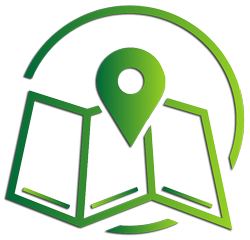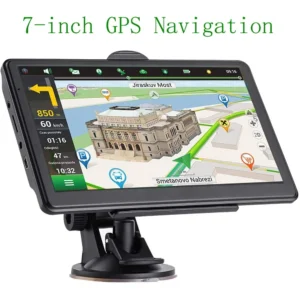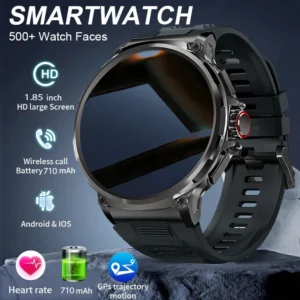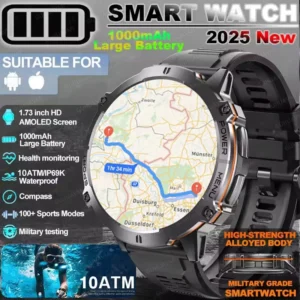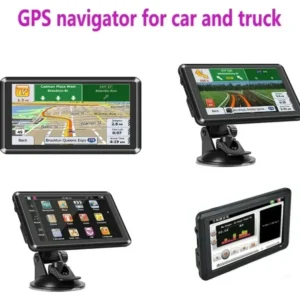GPS Devices Covered by Our Update Services
At GpsGuidePro, we bring together proven expertise and advanced tools to provide dependable, user-friendly GPS solutions. From new devices to the latest map updates, we ensure every trip is seamless and worry-free.

Fitness & Wearable GPS Units
Smartwatches and fitness trackers with GPS for running, cycling, and outdoor sports, offering performance tracking and route recording.

Truck & Commercial GPS Units
Designed for professional drivers, these GPS units provide truck-specific routes, height/weight restrictions, and delivery optimization.

RV & Travel GPS Units
Tailored for RVs and long trips, with campground locations, road restrictions, and safe routing for larger vehicles.

Automotive GPS Units
Designed for cars and trucks, providing turn-by-turn navigation, real-time traffic updates, and route planning.

Motorcycle GPS Units
Rugged, weather-resistant devices built for two-wheelers, with glove-friendly screens and vibration resistance.

Handheld GPS Units
Portable devices for hikers, campers, and outdoor adventurers, offering off-road maps and topographic navigation.
LATEST PRODUCTS
How To Update Your GPS Unit – Step By Step Process
Keeping your maps and firmware current is one of the best ways to ensure accurate routing, safer travel, and fewer surprises on the road. Below are long, detailed update procedures tailored to each major GPS type you offer on GpsGuidePro: Automotive, Motorcycle, Handheld, Fitness & Wearable, Truck & Commercial, and RV & Travel. Each section contains preparation steps, several update methods (USB, SD card, Wi-Fi, mobile app), verification, and troubleshooting tips.
General pre-update checklist (do this first for every device)
- Identify model & software version — note the exact model number, serial number, and current map/firmware version (usually in Settings → About).
- Back up your data — export favorites, waypoints, routes, tracks, and POIs to your computer, SD card, or cloud account. This prevents loss of saved locations.
- Charge the battery / connect to power — ensure device battery is at least 50–80% or keep it connected to a reliable power source during the entire update.
- Stable internet connection — updates can be large (hundreds of MB to multiple GB). Use a stable, high-bandwidth connection.
- Free up storage — delete old maps, voices, or unused POIs if storage is low. If your device uses a microSD card, ensure it has enough free space or upgrade to a compatible higher-capacity card.
- Use the right cable & ports — use the original or a high-quality USB cable and a working USB port on your computer. Avoid USB hubs for firmware updates unless manufacturer supports them.
- Have login & licenses ready — many manufacturers require an account or license key to download official maps. If using GpsGuidePro services, have your order details or device ID ready.
- Read manufacturer notes — some updates require incremental installs (install older patch first), or require the device to be on a specific firmware version before installing a new map.
1) Automotive GPS Units (in-dash & portable car units)
Typical update methods: USB to PC, SD / microSD card, Wi-Fi / over-the-air (OTA), or manufacturer desktop app.
Step-by-step
- Locate model info & current map version (Settings → About). Write it down.
- Back up favorites & addresses. Export to your computer or to your account (if the device syncs to an online account).
- Decide update route:
- Wi-Fi / OTA: If your unit supports Wi-Fi, go to Settings → Updates (or System → Wi-Fi) and connect to a trusted network. Follow prompts to check for updates.
- USB & desktop app: Download and install the manufacturer’s official updater on your computer (or use GpsGuidePro’s update portal if you purchased updates from us). Connect the GPS via USB. Launch the updater, sign in, select your device, and choose available map/firmware updates.
- SD / microSD: If your unit uses a removable map card, remove it and insert into an SD card reader. Use the updater to download maps directly to the card. Reinsert card into the GPS.
- Download the update. Monitor progress — large map files can take time.
- Install the update on the device. Do not unplug, power off, or interrupt the installation. If the device requires a restart, allow it to reboot fully.
- Verify installation. Check About → Map version. Run a quick route search and preview a few streets to confirm updated data.
- Re-sync favorites & settings if needed. If something was lost, reimport the backup file.
Tips & troubleshooting
- If the updater reports insufficient storage, remove older maps or transfer them to an external SD card.
- If the device disconnects mid-install, power down and restart the updater; some devices have recovery modes (check manual).
- For in-dash factory systems: some dealers recommend letting a professional perform firmware updates — if unsure, contact GpsGuidePro or your vehicle dealer.
- Always use official map sources or trusted providers; unofficial maps can corrupt navigation.
2) Motorcycle GPS Units
Typical update methods: microSD card, USB to desktop app, Bluetooth tethering to mobile app, or Wi-Fi (if supported). Motorcycle units emphasize ruggedness and often use smaller removable cards.
Step-by-step
- Charge unit & remove from mount. Ensure battery is charged and unit is dry.
- Back up routes / favorites (export to microSD or to cloud if supported).
- Choose update method:
- microSD card method (common): Remove the microSD card with map data. Insert into a computer card reader. Use manufacturer updater to write maps to the card. Replace the card in the unit.
- USB + desktop app: Connect via USB and use the official desktop updater.
- Phone app / tether: Some motorcycle GPS units can update via a phone app when tethered by Bluetooth — pair the phone, open the app, and follow update prompts.
- Install update and keep the unit powered until complete.
- Test road profiles & routing preferences (sport, twisty, off-road) to ensure settings persist.
Tips & troubleshooting
- Use ruggedized SD cards rated for vibration and temperature extremes.
- If using phone tethering, ensure mobile data signal is strong for downloads.
- For units with removable batteries, it’s safest to keep the unit tethered to a charger during updates.
3) Handheld GPS Units (hikers, outdoor explorers)
Typical update methods: USB + desktop app (often desktop mapping software), microSD map cards, direct Wi-Fi (if available), or map file side-loading (for open map sources like OSM).
Step-by-step
- Export tracks & waypoints (save .gpx/.tcx/.kml files) to your computer.
- Check available memory and clear old track logs if needed.
- Select update approach:
- Desktop updater: Connect device via USB, open the mapping/updater application, sign in, and select available map/firmware updates.
- microSD card: If using a card, copy map files to it (follow the folder structure specified by your device). Some handhelds use tiling (large map divided into tiles) — use the official tool to avoid file errors.
- Side-loading OSM maps: If you use open-source maps, download the correct tile set for your device and copy to the correct directory on the device or SD card.
- Install & reboot. Wait for the device to build map indexes (this can take time).
- Verify maps & functionality by loading a route and checking contour/topo details.
Tips & troubleshooting
- If map indexing takes a long time, leave device connected to power.
- When side-loading custom maps, match the file format your device expects (.img, .tdb, .rgn, etc.).
- Keep backup copies of important GPS tracks in multiple places (cloud + local).
4) Fitness & Wearable GPS Units (smartwatches, fitness trackers)
Typical update methods: Mobile phone app (firmware & map sync), Wi-Fi direct to device, or desktop sync in rare cases.
Step-by-step
- Charge the wearable fully (most firmware updates require 50–100% battery).
- Open the device’s companion phone app (the one you normally sync with — e.g., the manufacturer’s app). Make sure the app and the phone OS are updated.
- Pair & sync the device with the phone over Bluetooth. Backup any workout data if necessary.
- Check for firmware & map updates in the app’s device settings or System → Device updates. For wearables that include maps (outdoor watches), the app may have a separate “Maps” area to download map tiles.
- Start the update and keep the wearable within Bluetooth range, and keep both devices powered and connected to Wi-Fi (if the app uses Wi-Fi to speed up downloads).
- Allow the update to complete. Do not interrupt Bluetooth or force-quit the app.
- Sync & verify: After update, sync your device and test a GPS activity to confirm satellites lock and maps render correctly.
Tips & troubleshooting
- If the app reports a stalled update, restart phone and wearable, then try again.
- For large map downloads, some apps allow downloading maps over Wi-Fi for faster transfer.
- If GPS performance degrades after an update, test in an open area and re-calibrate sensors (compass/altimeter) if available.
5) Truck & Commercial GPS Units
Typical update methods: USB or SD transfer via desktop updater, Wi-Fi OTA, or fleet management portal for multi-unit updates. Truck GPS units often include truck-specific routing (height, weight, hazardous materials restrictions) that require up-to-date road data.
Step-by-step
- Record vehicle profile (length, height, weight, restrictions) in device settings before updating — these settings can affect routing and may need reapplying after certain firmware resets.
- Back up saved routes, stops, and POIs (delivery addresses). Export files if possible.
- Choose update path:
- Desktop update: Connect via USB and use the official app. Choose truck-specific map packages if offered.
- SD card / USB stick: Download maps to the card or stick and insert into device. Some truck units accept USB sticks for map installs.
- Fleet portal: If you manage multiple units, use the fleet manager portal to push updates to all devices at once (check compatibility and scheduling).
- Install maps & firmware. Be patient — truck maps can be large. Do not interrupt.
- Recheck vehicle profile & routing settings after update. Run a test route that includes weigh stations, low overpasses, and known truck constraints to ensure proper routing.
- Update POIs for truck stops, truck repair, weigh stations, and rest areas.
Tips & troubleshooting
- Subscription maps: Some truck map packages are subscription based — ensure your subscription is active.
- For fleet updates, schedule them during off-hours to avoid downtime.
- If the device loses its truck profile, re-enter accurate vehicle dimensions before use.
6) RV & Travel GPS Units
Typical update methods: USB desktop updater, SD/microSD map cards, Wi-Fi OTA. RV units emphasize campground POIs, road restriction info, and safe routing for large vehicles.
Step-by-step
- Back up campgrounds, saved stops, and custom routes. Export as needed.
- Confirm your RV profile settings (length, width, height, weight) so routing avoids tight roads or low clearances.
- Choose an update method:
- Wi-Fi / OTA: Connect unit to Wi-Fi and check System → Updates for map & firmware downloads.
- USB & desktop: Connect via USB and run the official updater to download RV map packs or campground databases.
- SD card: If the device uses external cards, write map files to the card and reinsert.
- Install and wait for the device to fully reboot.
- Verify campground POIs and restrictions by searching for a nearby campground and checking details (phone, services, coordinates).
- Run a test route from A → B that includes highway and non-highway segments to ensure RV routing preferences are honored.
Tips & troubleshooting
- Keep an eye out for campground & RV park database updates — these often update separate from general road maps.
- If routing sends you to unsuitable roads, double-check vehicle profile and firmware version — sometimes a firmware update fixes routing logic.
